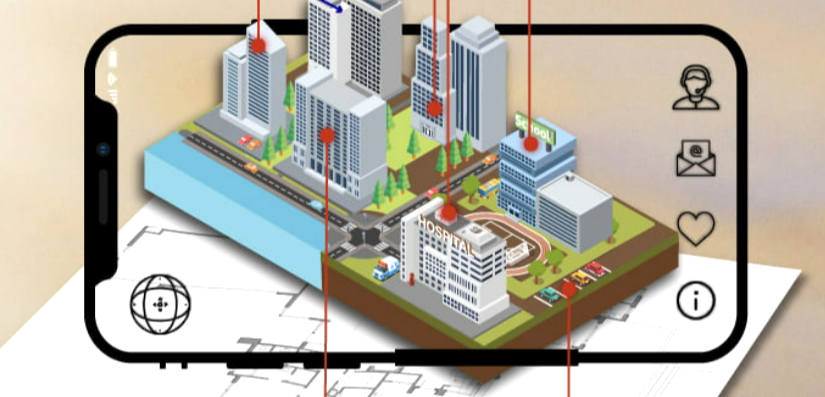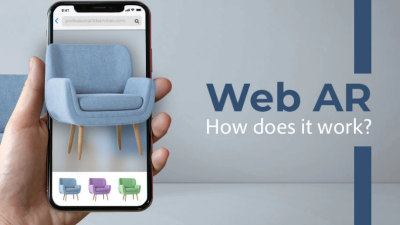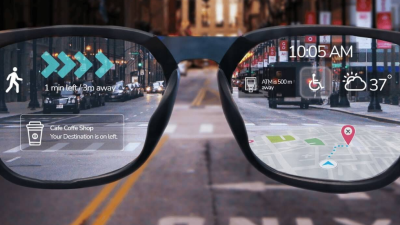The corporate landscape undergoes constant transformation as emerging technologies reshape operational foundations. Among these innovations, augmented reality stands out for its remarkable capacity to blend digital information with physical environments in ways that solve longstanding business challenges. Unlike purely digital solutions that exist separately from the physical world, AR creates an enhanced version of reality where virtual elements provide contextually relevant information exactly when and where users need it.
This technological approach delivers particular value in business settings where workers make critical decisions based on complex information while interacting with physical objects or environments. The ability to overlay instructions, data visualizations, remote expertise, or product information directly onto a user’s view of the real world creates opportunities for efficiency gains, error reduction, and customer experience enhancements that simply weren’t possible before.
Operational Transformation Through AR
Manufacturing operations represent one of the most compelling showcases for augmented reality’s business value. Factory workers equipped with AR-capable devices can see assembly instructions projected directly onto components, eliminating the need to consult separate manuals or computer screens. This keeps attention focused on the task while reducing the cognitive load associated with translating written instructions into physical actions.
Maintenance technicians similarly benefit when diagnostic information appears overlaid on the equipment they’re servicing. Complex machinery becomes more accessible when AR highlights specific components requiring attention and provides visual guidance for repair procedures. These capabilities prove especially valuable for maintaining infrequently serviced equipment or handling uncommon repair scenarios where technician familiarity might be limited.
Warehouse operations have witnessed dramatic efficiency improvements through AR implementation. Vision picking systems guide workers through facilities with directional indicators and product identification, reducing errors while accelerating order fulfillment. According to research from DHL’s innovation center, facilities implementing AR picking solutions have seen productivity increases averaging 15% alongside substantial error reductions.
Remote Collaboration Reimagined
Perhaps augmented reality’s most transformative business impact emerged during global workplace disruptions that accelerated remote collaboration needs. AR-enabled remote assistance platforms allow experts to virtually “see” through the eyes of field workers, annotating their view with instructions, drawings, or highlighting specific areas requiring attention.
This capability fundamentally changes how businesses deploy expertise across distributed operations. A single specialist can now support multiple locations without travel, guiding less experienced personnel through complex procedures with visual instructions overlaid directly on their work environment. The result is faster problem resolution, reduced downtime, and more efficient utilization of specialized knowledge across the organization.
For design and development teams, shared AR environments enable collaborative work on three-dimensional projects despite physical separation. Architects can walk clients through virtual buildings placed in actual construction sites, while product designers manipulate virtual prototypes visible to team members regardless of location. These capabilities preserve collaborative dynamics that traditionally required physical presence while eliminating associated travel costs and logistical challenges.
Customer Experience Enhancement
Beyond operational applications, businesses increasingly leverage augmented reality to transform customer interactions. Retail represents a particularly fertile ground for these innovations, with virtual try-on experiences allowing shoppers to see how products would look without physical sampling. Furniture retailers enable customers to visualize pieces in their actual living spaces before purchase, while cosmetics brands offer virtual makeup application that responds to individual facial features.
As we previously explored in our guide to immersive marketing techniques, these applications reduce purchase uncertainty while creating memorable brand interactions that conventional shopping experiences cannot match. The ability to “try before buying” through AR addresses fundamental consumer concerns about fit, appearance, and suitability that often create purchase hesitation.
Real estate professionals employ AR to enhance property marketing by overlaying information about features, specifications, or renovation possibilities directly onto spaces as prospective buyers tour properties. This contextual information delivery makes details more memorable while helping clients visualize potential modifications or improvements based on their specific needs.
Training across various industries has been revolutionized through AR-based instructional systems. From healthcare education where medical students practice procedures on virtual patients to retail environments where new employees learn operational processes through guided AR experiences, these applications accelerate proficiency while reducing the costs and logistical challenges associated with traditional training approaches.
Implementation Considerations
Despite clear benefits, widespread business adoption of augmented reality requires navigating several implementation considerations. Integration with existing systems represents a primary challenge, as AR solutions must connect with enterprise data sources, inventory management systems, customer records, and equipment specifications to deliver contextually relevant information. Organizations need thoughtful integration strategies and potentially significant backend adaptations to enable seamless AR experiences.
The hardware equation continues evolving rapidly. While specialized headsets offer the most immersive experiences, their cost and form factor limit scalability for many applications. Smartphone and tablet-based AR provides more accessible entry points but with reduced functionality compared to dedicated devices. Businesses must carefully match hardware approaches to specific use cases, considering factors like user mobility requirements, environmental conditions, and the level of hands-free operation needed.
Content creation and maintenance represent ongoing investments for business AR implementation. Three-dimensional models, instructional overlays, and virtual product representations require specialized skills to develop and regular updates to maintain accuracy. Organizations must establish sustainable content management approaches that align with product lifecycles and operational changes.
User adoption often presents cultural rather than technical barriers. Employees accustomed to conventional workflows may initially resist AR-mediated approaches, particularly when devices feel intrusive or unfamiliar. Successful implementations typically include comprehensive change management strategies addressing these human factors alongside technical considerations.
Sector-Specific Applications
Healthcare organizations increasingly employ AR for both clinical and operational purposes. Surgeons use AR displays showing vital patient information and anatomical guidance without looking away from the surgical field. Pharmaceutical companies provide AR-enhanced medication information helping patients understand proper usage and potential side effects. Medical device manufacturers offer AR-guided setup and operation instructions reducing reliance on in-person technical support.
Industrial maintenance operations benefit from AR applications that reduce equipment downtime while optimizing technician efficiency. Field service teams access comprehensive repair history, diagnostic information, and procedural guidance through AR interfaces, enabling faster resolution even for complex problems. This capability proves particularly valuable for servicing equipment in remote locations where specialist availability is limited.
Retail environments increasingly blend physical and digital experiences through strategic AR implementation. Beyond virtual try-on applications, retailers deploy navigation assistance helping customers locate products within stores, interactive displays providing product information through smartphone scanning, and personalized recommendations based on previous purchase history when customers view specific merchandise sections.
Return on Investment Considerations
Business leaders evaluating AR implementations should consider multidimensional return on investment frameworks. Direct financial benefits typically include reduced error rates, decreased training time, lower travel costs for specialized personnel, and improved first-time fix rates for service operations. These quantifiable gains often provide primary justification for initial investments.
Indirect benefits frequently prove equally significant though harder to quantify precisely. Enhanced customer experiences leading to improved satisfaction scores, reduced cognitive load for workers resulting in decreased fatigue and improved retention, and accelerated knowledge transfer from experienced personnel to new employees all contribute to long-term organizational value that extends beyond immediate operational metrics.
The PTC State of Industrial Augmented Reality report indicates organizations achieving the strongest AR implementation results maintain balanced focus across both efficiency improvements and experience enhancements rather than pursuing single-dimensional objectives. This balanced approach ensures technical capabilities align with genuine business needs while creating engagement incentives for both employees and customers.
Future Directions
Business applications for augmented reality continue evolving toward deeper integration with complementary technologies. The combination of AR with artificial intelligence enables systems that not only display information but also interpret visual input to provide contextual recommendations. A maintenance technician might receive not just repair instructions but also predictive guidance about components likely to fail soon based on visual analysis of equipment condition.
The emergence of collaborative AR environments supporting multiple simultaneous users points toward more sophisticated team-based applications. Rather than individual augmented experiences, these systems create shared perceptual spaces where multiple participants interact with common virtual elements regardless of physical location. This capability promises particularly valuable applications for distributed design teams, complex maintenance operations requiring diverse expertise, and training scenarios mimicking collaborative workplace conditions.
Miniaturization continues driving AR hardware toward more comfortable, less obtrusive form factors. As specialized glasses become lighter and more socially acceptable, the technology will integrate more seamlessly into customer-facing roles and everyday business operations. This evolution will likely accelerate adoption in contexts where current headsets prove too cumbersome or conspicuous for practical deployment.
Implementation Approach
Organizations beginning AR implementation journeys should consider graduated approaches starting with clearly defined use cases addressing specific operational pain points. Pilot programs with measurable outcomes provide valuable learning experiences while demonstrating potential value before broader deployment. This measured approach allows organizations to develop internal expertise and refine implementation strategies based on actual operational experience.
Cross-functional teams typically achieve stronger results than technology-led implementations. Successful AR deployments require close collaboration between operational experts who understand workflow nuances, technical specialists managing system integration, and change management professionals addressing adoption challenges. This collaborative approach ensures solutions address genuine needs rather than showcasing technology for its own sake.
Ongoing measurement remains essential as AR capabilities evolve rapidly. Organizations should establish clear metrics aligned with business objectives, regularly assessing both quantitative results and qualitative feedback from users. This continuous evaluation approach supports incremental improvements while identifying opportunities for expanded implementation where clear value emerges.
Conclusion
Augmented reality in business represents far more than technological novelty—it fundamentally transforms how organizations operate, collaborate, and engage customers by blending digital capabilities with physical environments. From manufacturing floors where workers receive contextual guidance to retail environments where customers visualize products in personalized ways, AR creates capabilities that address longstanding business challenges while enabling entirely new operational approaches.
Organizations achieving the greatest success with augmented reality move beyond viewing it as merely another digital tool, instead recognizing its potential to reshape fundamental aspects of how people work, learn, and interact with products and services. By thoughtfully implementing AR with clear business objectives, organizations can achieve measurable improvements in efficiency, accuracy, and engagement while positioning themselves for future innovations as the technology continues its rapid evolution.
As implementation barriers continue falling through hardware advances, simplified development tools, and expanding implementation expertise, augmented reality will increasingly transition from competitive advantage to operational necessity across diverse business sectors. Organizations establishing implementation foundations today position themselves to capitalize on this transformation while developing the organizational capabilities needed for long-term success in increasingly augmented business environments.





